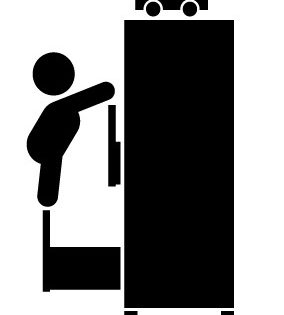The “terrible twos” typically occurs when your toddler is around 18 months old and again at around 30 months old. Characterised by abrupt mood changes and temper tantrums, it is a developmental period that is often referred to with fear and distress among parents. It occurs due to conflict between a toddler’s need to be reliant on adults and his desire to be independent. This is happening because he is trying to assert himself as an individual.
Working with your child
Instead of fighting him, allow him to assert his independence in ways that are socially and morally acceptable. This will help ease his transition through this stage, and develop into a more cooperative and reasonable pre-schooler.
Some tips on how parents can cope with the “terrible twos”:
- Be patient and have a sense of humour. This is important when dealing with your toddler as it will make the experience less stressful on the both of you.
- Avoid questions that can be answered with a “yes” or “no”. During this stage, he will most likely answer with a resounding “NO!” if you ask “Would you like porridge for lunch?” (or any similar questions). Try giving him a choice instead, by asking, “Would you like porridge or sandwiches for lunch?”
- Focus on the positive aspect of his behaviours rather than punishing his misbehaviours as he develops. Doing so will help him focus on his positive traits as well. Get a small pad and write down at least five things that he does right every day (e.g. he ate his breakfast on his own; he brushed his teeth, etc.). Share the list with him before bedtime every night. This provides him with positive reinforcement every night and helps you shift your focus on his positive behaviours instead of just looking at his negative behaviours.
- Keep your focus on the behaviour you want from him rather than calling attention to unwanted behaviour. For example, instead of telling him off for running all over the mall, tell him something like, “I like it when you walk around near me at the mall.”
- Do your best to avoid power struggles. Allow your toddler the independence to make his own decisions if no harm comes to anyone or anything. However, you may need to assert yourself in situations that involve the health and safety of your toddler or someone else. For example, he should be placed in his car seat, but let him have the option of choosing his own clothes.
- Learn to be flexible when dealing with your toddler. While it might seem that your toddler is “in control”, what you really want to do is assess the situation and make a decision that will benefit everyone, especially your toddler. For example, if he makes a fuss about keeping his toys, you could opt to give him a hand instead of being adamant in forcing him to clean up by himself.
- Always give your toddler as many choices as you can. This often makes it easier for him to accept the times when there is no choice. For example, if you go somewhere and need to leave, ask him if he would like to get in the car by himself or if he wants your help.
- Don’t be afraid to become a clown on occasion. Using humour and silliness as a tool to melt your toddler’s defences or obstinacy can mean the difference between getting him to do what you want with minimum fuss of shouting and screaming.
- Avoid demanding obedience from your toddler. Rather than commanding him to put away his toys, try saying something like, “Could you help me to get these cute little toys into their comfy little homes?”
Stay focused
These tantrums will not last forever. Children need to go through the “terrible twos” in order to grow into responsible individuals who know what they want and can think well for themselves. When you must set limits, be firm, but do not be too rigid on your expectations toward your child. Allow some leeway or margin for error provided there is no gross violation of accepted norm. At the end of the day, toddlers still need parents to set limits for their safety and security.







Comments